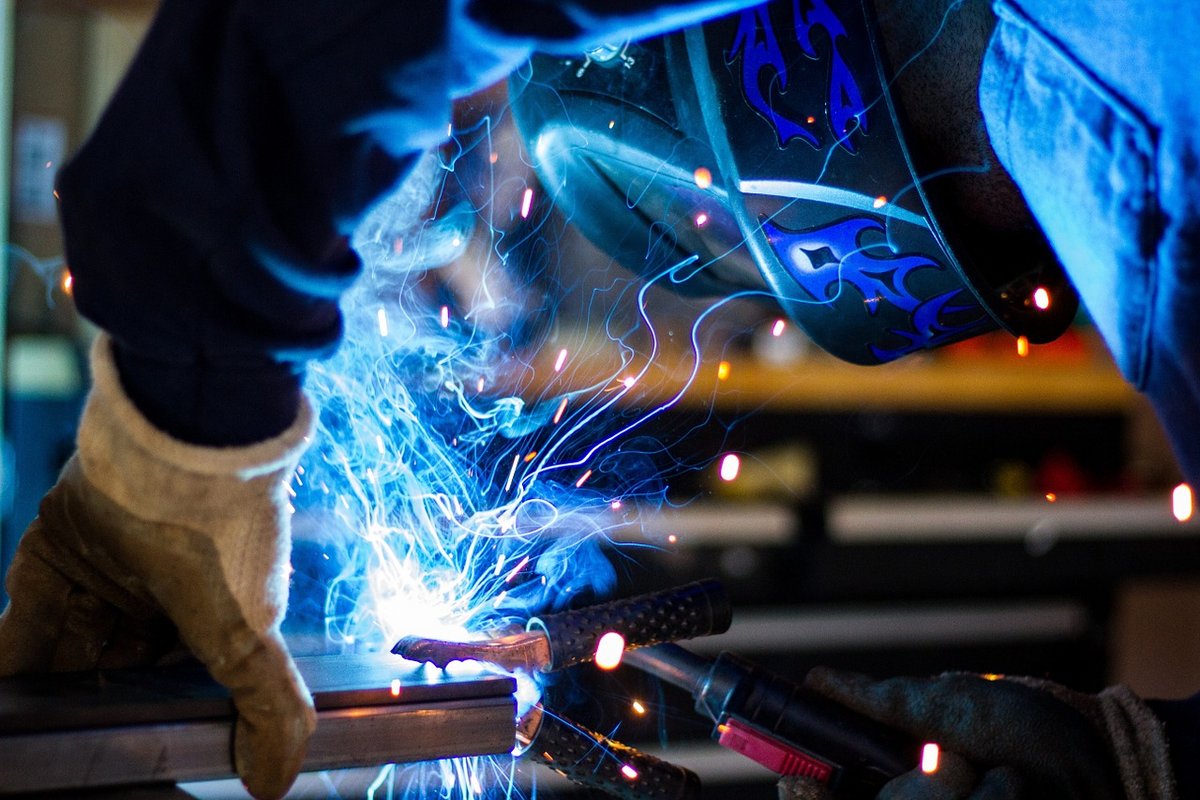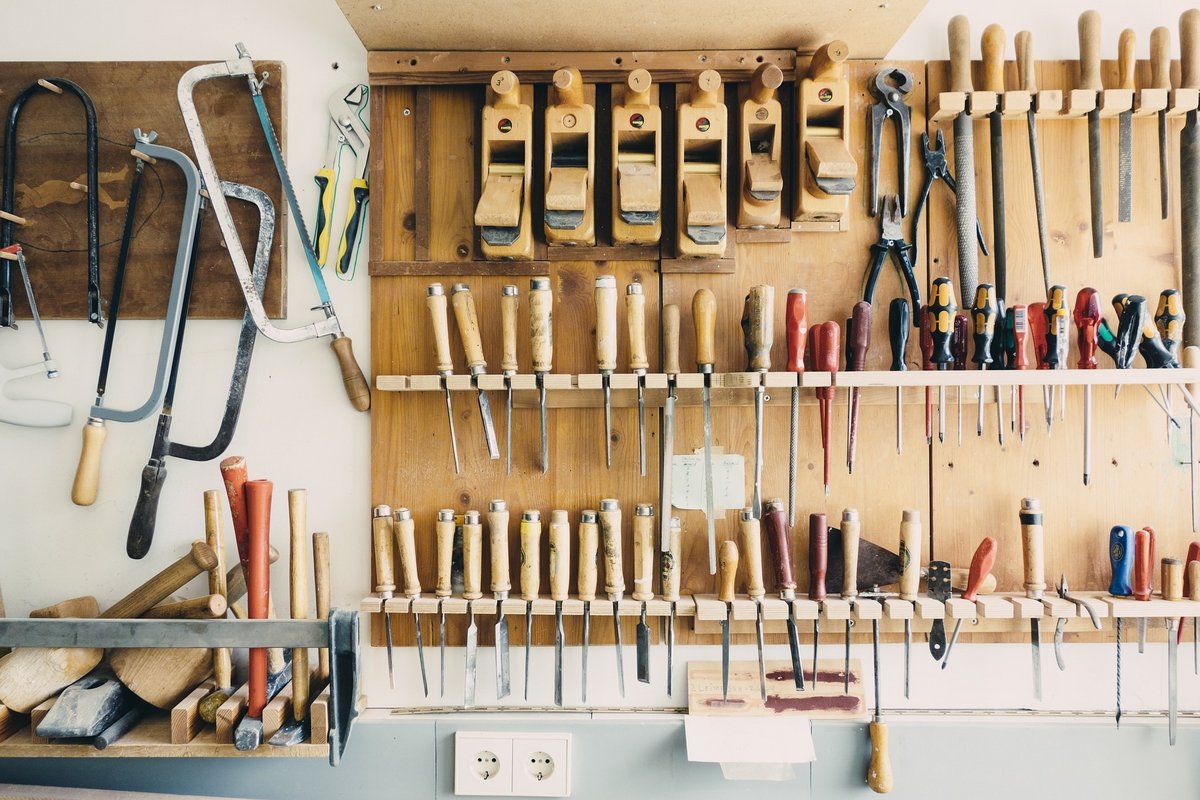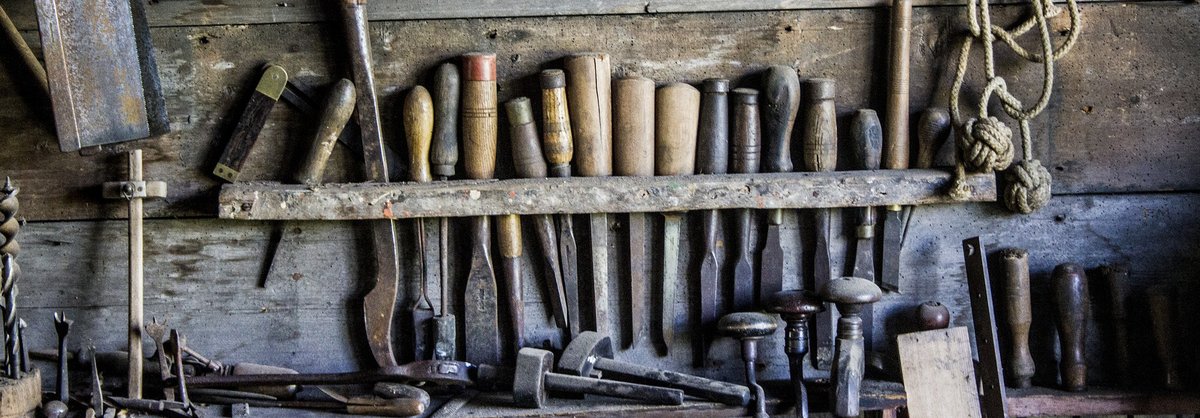Without the service of the scientific workshops of the University of Konstanz, research in the field of natural sciences and technology would be difficult or very limited.
The construction of prototypes in particular distinguishes this facility from conventional mechanical workshops. And the wood workshops are an important pillar of the university's operations.
As versatile as the tasks are the possible dangers. Almost the entire range of hazard factors can be found here:

When welding with different methods, not only glowing or liquid metal but also poisonous welding fumes are produced in addition to great heat. The molten metal can cause serious burns, welding fumes can lead to poisoning when inhaled. explosive gases are used for welding and large currents are used for electric welding. Cooled welding beads (i.e. not those on the forehead, which undoubtedly also occur!) can fly around uncontrolled.
Typical hazard factors during welding are:
- Electrical hazard
- Mechanical hazards due to uncontrolled movement of parts
- Hazardous substances
- Danger from fires and explosions
- Physical hazards due to noise and heat
- Exposure due to the wearing of welding protective clothing, and
- Ergonomic factors such as heavy physical work and one-sided strain

Metalworking is another important field of work (welding and soldering are of course part of it). First and foremost, however, it is mechanical machining such as turning, milling, cutting, bending, etc. that is common.
For all activities partly large machines are used and not all are fully automatic. Under certain circumstances, metal chips can fly around. The machined metal becomes hot, burns can result and cooling lubricants are usually used for cutting and drilling, some of which are classified as hazardous substances. Lathes and drilling machines as well as cut-off grinders, etc. are controlled moving parts, but can also cause serious injuries or amputations of limbs due to trapping or sharp edges. Of course, PPE must also be worn for these activities.
Typical hazard factors are:
- Mechanical hazards caused by controlled and uncontrolled movement of parts. There is a risk of being trapped, bruises, eye injuries and amputation.
- Physical hazards through heat lead to burns and through noise to hearing damage.
- Cooling lubricants may be classified as hazardous substances.
- Stress caused by wearing PPE
- Heavy physical work when preparing semi-finished products and raw material. Lifting and carrying heavy loads and one-sided loads are the rule rather than the exception.
- Hand-held machines such as cut-off machines etc. can be subject to hand-arm vibrations.

In principle, the same applies to woodworking as to metal, except that wood does not become so hot that you can burn yourself on it. But on the hot tool. Cooling lubricants are rather not used, but some very fine wood dusts are classified as carcinogenic. PSA is obligatory!
Hazard factors as with metal and additionally:
- Wood dust can under certain circumstances be classified as a hazardous substance (carcinogenic).

